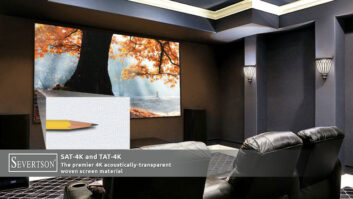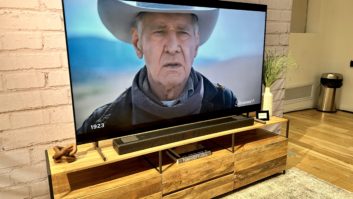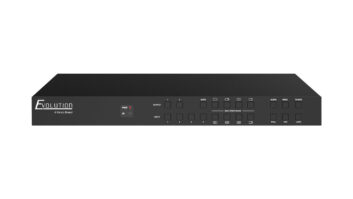NEW YORK – 4K Ultra HD TV is here to stay and should mark the pinnacle of home entertainment video performance for the foreseeable future.
That was the assessment of a group of Sony executives representing the company’s broadcast, movie and consumer electronics divisions during a CE Week roundtable here.
The executives discussed the arrival in stores of Ultra HDTVs and even consumer level “4K-for-2K” Ultra HD camcorders to support them, adding that broad-based support of Hollywoodproduced 4K movies and television programming is right around the corner, with a significant volume of feature films already on hand.
Hugo Gaggioni, Sony broadcasting and production system division chief technology officer, pointed out that with the launch of the first 4K Ultra HD sets three years ago, the market faced the inverse of what existed back in the late ’90s when the first HDTVs hit the market with no native content in sight.
In that rollout, consumer-level TVs were sold for several years before broadcasters were ready to deliver content that could fulfill the sets’ high-resolution benefits.
With Ultra HD TVs, broadcast TV and movie producers at Sony Pictures and other progressive studios have been creating content in 4K resolution for a number of years, awaiting only a means of distribution to get the fare onto the new class of sets.
He added that market conditions are more ready today for a successful Ultra HD launch than they were for the start of high-definition more than a decade ago.
Grover Crisp, Sony Pictures executive VP, said 4K has been around for as long as Blu-ray Disc, noting that he first recognized the resolution benefits of 4K content while mastering for some of the first FullHD Blu-ray discs.
“A 35mm film frame is about 4K resolution, but we’ve never been able to capture or exhibit it before,” Crisp said, adding that Sony built 4K scanners at that time and has since built on the lot facilities for 4K workflow which has helped amass a large 4K library.
As for consumers and broadcasters who have heard about the existence of 8K resolution video and would rather wait for that before upgrading, the executives said it will be some time before infrastructure is ready to support that format’s more complex characteristics and bandwidth demands.
Gaggioni even questioned whether the benefits of 8K would be discernable at all on sets measuring up to 80 inches (a screen size that is larger than most homes will ever have).
“To truly push 8K to its full power, you need very large screens,” Gaggioni pointed out. 8K will come in the future, but for society at large 4K is the best bet at the moment.”
“Anything in 4K is going to look better,” noted Mike Fasulo, Sony Electronics U.S. president. “If you stand in front and get a true demonstration of 4K up-scaled and Blu-ray up-scaled on a 4K [TV], it’s going to look better compared to high definition. We’re doing a demonstration [in Best Buy stores] so a customer can make their decision on whatever they like best.”
As for content distribution, the picture wasn’t as clear for a native Ultra HDTV spec. The executives said now more than two years of discussions continue on a next generation Blu-ray standard, but issues remain over intellectual property protection, compression algorithms and disc capacity.
“We’re not going to wait for the spec to come out,” said Fasulo. “We are going to continue pushing the envelope for better quality and better content. We’re not going to leave consumers hanging.”













